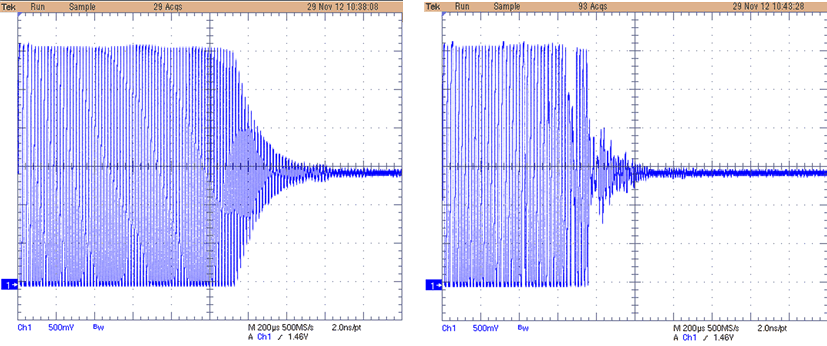SLAA732A February 2017 – April 2021 PGA460 , PGA460-Q1
4.4.4 Tunable Transformer
In addition to the appended tuning capacitor, variable coil transformers offer the ability to further tune the secondary-side inductance of the transformer. The tunable transformer can be adjusted by the top notch of the screw-type transformer, which is especially useful for systems that require short-range optimization. To observe the effects of tuning the transformer, the ringing-decay profile or low-noise amplifier output must be monitored. Figure 4-5 shows the ringing-decay profile of a transducer before and after the transformer is tuned for a –600-µs (+10 cm) improvement.
 Figure 4-5 Ringing-Decay Time Before and After Tuning of Variable Coil Transformer
Figure 4-5 Ringing-Decay Time Before and After Tuning of Variable Coil Transformer